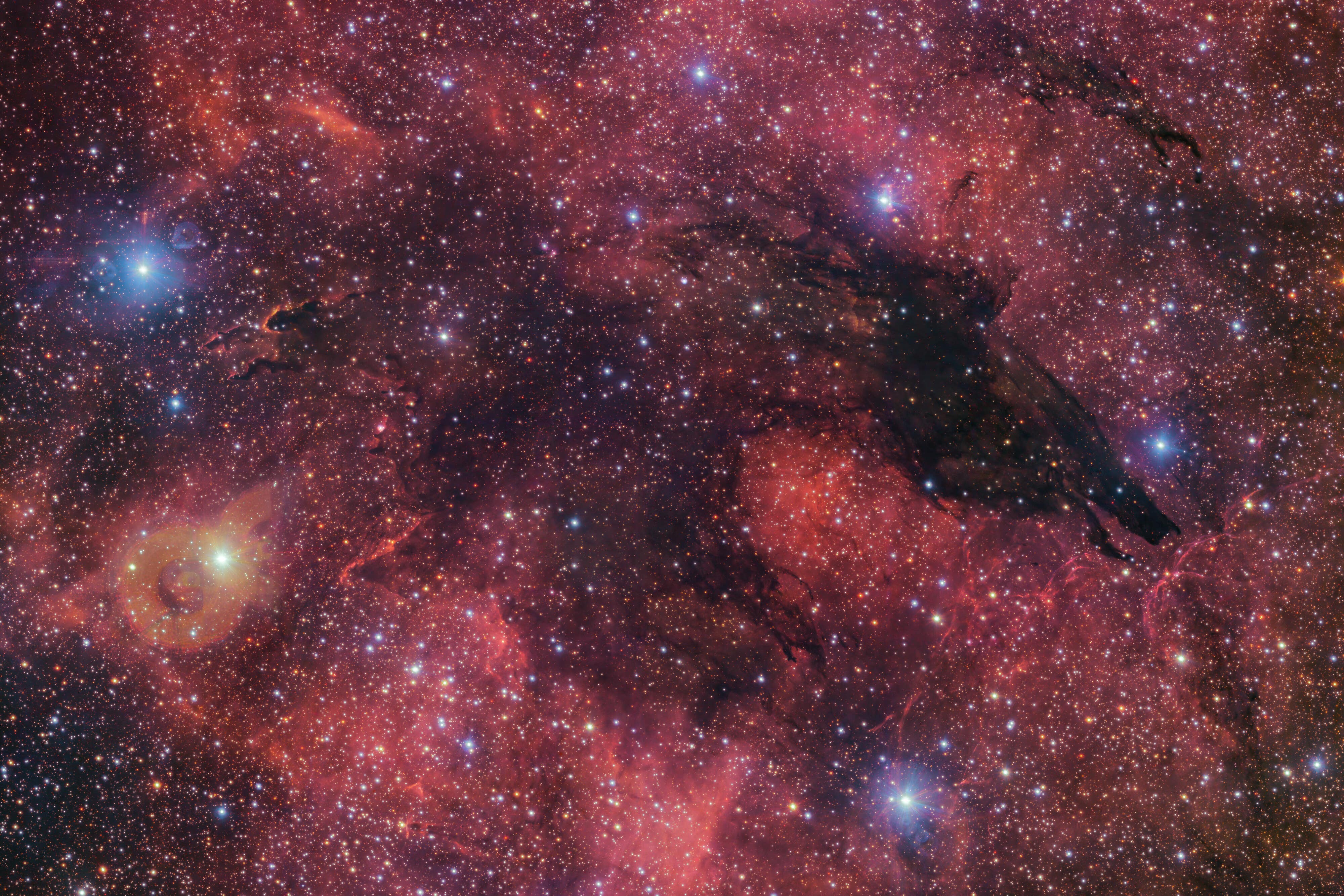New image captures a ‘dark wolf’ in the cosmic sky
Dark nebulae are cold clouds of cosmic dust, so dense that they obscure the light of stars and other objects behind them.

Astronomers have unveiled an image of a giant cloud of space gas and dust that creates the illusion of a wolf-like silhouette against a colourful cosmic backdrop.
Nicknamed the Dark Wolf Nebula, the cloud is in the Scorpius constellation near the middle of the Milky Way, around 5,300 light-years from Earth.
This image takes up an area in the sky equivalent to four full moons, but is actually part of an even larger nebula called Gum 55.
Some people viewing the image might even think it looks like a werewolf, with hands reaching out.
Dark nebulae are cold clouds of cosmic dust, so dense that they obscure the light of stars and other objects behind them.
Dust grains within them absorb visible light and only let through radiation at longer wavelengths, such as infrared light.
These clouds of frozen dust are of interest to astronomers because they often contain new stars in the making.
The new image, captured in a 283-million-pixel image by the VLT Survey Telescope (VST) at the European Southern Observatory’s (ESO) Paranal Observatory in Chile, shows in detail how the dark wolf stands out against the glowing star-forming clouds behind it.
The colourful clouds are built up mostly of hydrogen gas and glow in red tone because of the intense UV radiation from the newborn stars within them.
The picture was compiled from images taken at different times, each one with a filter letting in a different colour of light.
Bookmark popover
Removed from bookmarks